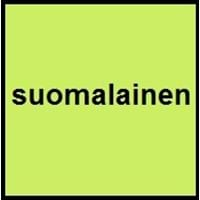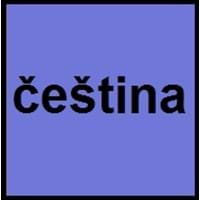Finnish and Czech
Countries
European Union, Finland
Czech Republic, European Union
National Language
Estonia, Finland, Norway, Russia, Sweden
Czech Republic
Second Language
Estonia
Not spoken in any of the countries
Speaking Continents
Asia, Europe
Europe
Minority Language
Republic of Karelia, Russian Federation, Sweden
Austria, Croatia, Germany, Slovakia
Regulated By
Institute for the Languages of Finland
Institute of the Czech Language
Interesting Facts
- Finnish language has adopted many words from Iranian, Turkic, Baltic, Germanic and Slavic languages.
- In Finnish language, there are no articles or grammatical gender.
- The Czech language was known as Bohemian as early at 19th century.
- In czech language, there are many words that do not contain vowels.
Similar To
Estonian and Livonian Languages
Polish, Slovak and Sorbian
Derived From
Not Available
Not Available
Alphabets in
Finnish-Alphabets.jpg#200
Czech-Alphabets.jpg#200
Writing Direction
Left-To-Right, Horizontal
Left-To-Right, Horizontal
How Are You?
Mitä kuuluu?
Jak se máš?
Good Night
hyvää yötä
dobrou noc
Good Evening
Hyvää iltaa
dobrý večer
Good Afternoon
Hyvää iltapäivää
dobré odpoledne
Good Morning
Hyvää huomenta
dobré ráno
I Love You
Minä rakastan sinua
Miluji tě
Excuse Me
Anteeksi
promiňte
Dialect 1
Colloquial Finnish
Chod
Where They Speak
Finland
Chodsko, Bohemia
Where They Speak
Finland, Rauma
Czech Silesia, Hlucin, Northeast Moravia
Dialect 3
Meänkieli
Moravian
Where They Speak
Finland, Sweden
Czech Republic, Czech Silesia, Moravia, Slovakia
Speaking Population
Not Available
Second Language Speakers
Not Available
Native Name
suomi / suomen kieli
čeština / český jazyk
Alternative Names
Suomi
Bohemian, Cestina
French Name
finnois
tchèque
German Name
Finnisch
Tschechisch
Pronunciation
[ˈsuomi]
Not Available
Ethnicity
ethnic Finns
Czechs
Language Family
Uralic Family
Indo-European Family
Subgroup
Finno-Ugric
Slavic
Early Forms
Proto-Finnic language
Proto-Czech, Old Czech
Standard Forms
standard Finnish
Standard Czech
Language Position
Not Available
Signed Forms
Signed Finnish
Czech Sign Language
Scope
Individual
Individual
ISO 639 6
Not Available
Not Available
Glottocode
finn1318
czec1258
Linguasphere
No data available
53-AAA-da
Language Type
Living
Living
Language Linguistic Typology
Subject-Verb-Object
Not Available
Language Morphological Typology
Agglutinative, Synthetic
Fusional, Synthetic
All Finnish and Czech Dialects
Most languages have dialects where each dialect differ from other dialect with respect to grammar and vocabulary. Here you will get to know all Finnish and Czech dialects. Various dialects of Finnish and Czech language differ in their pronunciations and words. Dialects of Finnish are spoken in different Finnish Speaking Countries whereas Czech Dialects are spoken in different Czech speaking countries. Also the number of people speaking Finnish vs Czech Dialects varies from few thousands to many millions. Some of the Finnish dialects include: Colloquial Finnish, Rauma. Czech dialects include: Chod , Lach. Also learn about dialects in South American Languages and North American Languages.
Finnish and Czech Speaking population
Finnish and Czech speaking population is one of the factors based on which Finnish and Czech languages can be compared. The total count of Finnish and Czech Speaking population in percentage is also given. The percentage of people speaking Finnish language is Not Available whereas the percentage of people speaking Czech language is 0.15 %. When we compare the speaking population of any two languages we get to know which of two languages is more popular. Find more details about how many people speak Finnish and Czech on Finnish vs Czech where you will get native speakers, speaking population in percentage and native names.
Finnish and Czech Language Codes
Finnish and Czech language codes are used in those applications where using language names are tedious. Finnish and Czech Language Codes include all the international language codes, glottocodes and linguasphere.





